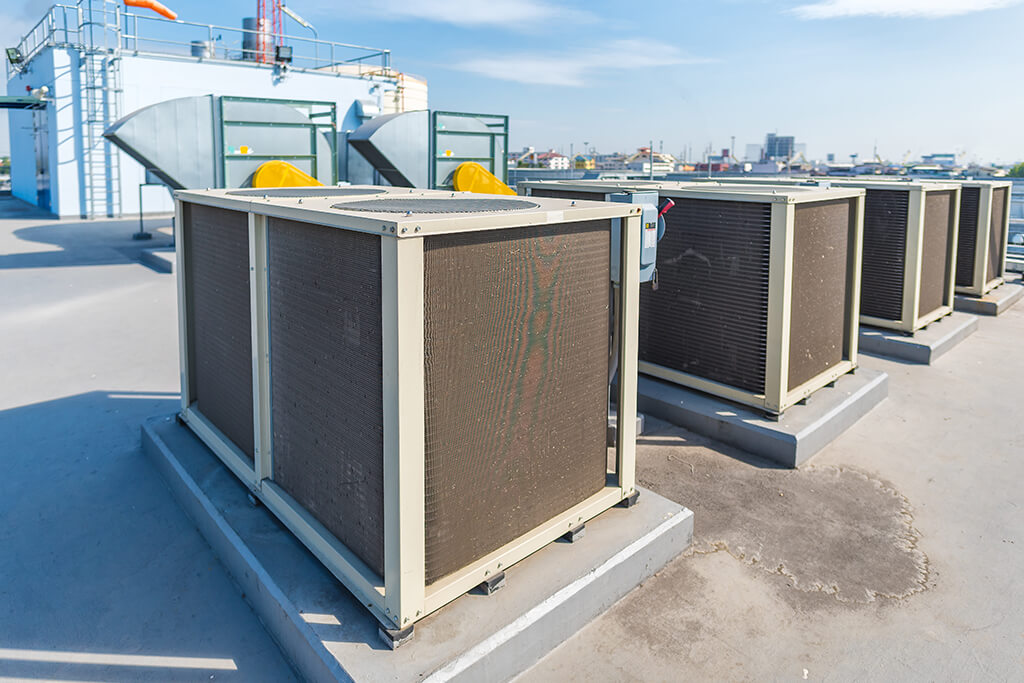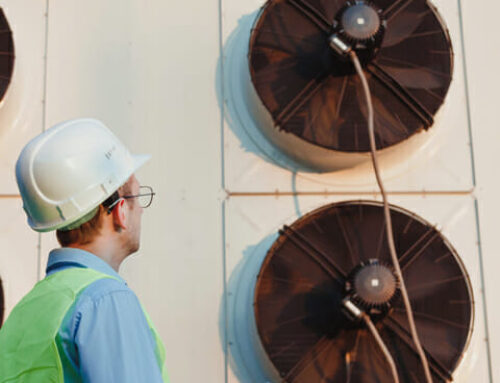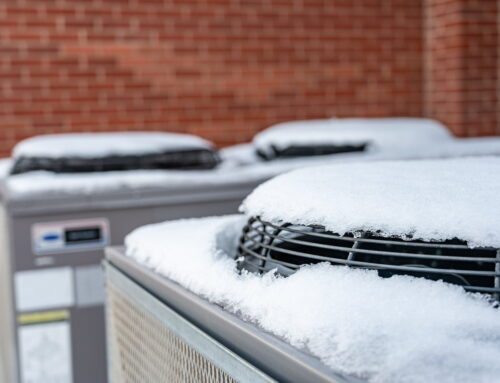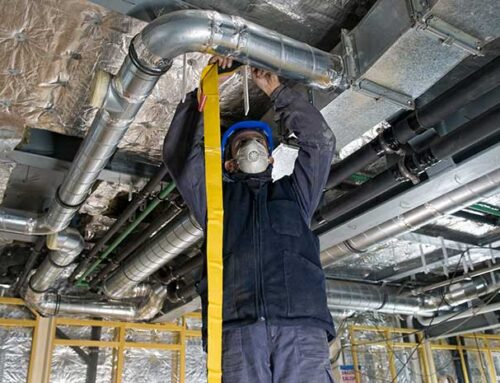Tackling humidity with home dehumidifiers and air conditioning systems can feel like an uphill battle, especially when you’re dealing with large spaces and aiming for optimal air circulation. Traditional techniques and approaches often fall short, leaving you in a sticky situation without smart strategies to impact the outcome. However, integrating strategies for reducing humidity through commercial HVAC systems, including heat pumps, dehumidification methods, and the dehumidification process, offers a breath of fresh air in cooling. This approach not only promises to keep moisture levels in check, addressing both high humidity and low humidity through indoor humidity control, but also enhances the overall environment, making it more comfortable and conducive to productivity by maintaining optimal interior humidity. Dive into how these systems work their magic in dehumidification methods and why they could be your best bet against the dampness dilemma, especially with high humidity levels, by maintaining indoor humidity control at optimal humidity levels.
Understanding Humidity in Commercial Buildings
Relative Humidity
Relative humidity is a way to measure how much moisture the air holds, significant in cooling, HVAC systems, and the reheat process in a space. It’s shown as a percentage. This number, relative humidity, tells us if the air feels dry or moist, aiding in humidity control and cooling in high humidity conditions.
Indoor humidity levels should be balanced by air conditioners and HVAC systems for comfort, health, and efficient cooling. Too high humidity control, and the space feels muggy; too low, and it’s uncomfortably dry due to air conditioning cooling. Tools called hygrometers measure this inside buildings.
Indoor Sources
Many activities add moisture to indoor air. Cooking, washing, and even people breathing in a home can increase humidity levels, affecting HVAC systems and cooling space. In commercial settings, certain HVAC systems also release moisture into the air for humidity control, particularly in high humidity environments requiring cooling.
To manage interior humidity, identifying these sources is crucial. Reducing or controlling them helps keep the environment comfortable.
Building Design
The design of a home, including HVAC systems and cooling space, plays a big role in managing indoor humidity levels. Proper ventilation systems are key to removing excess moisture and controlling humidity, especially in spaces with high humidity, thereby cooling the air.
Materials used in construction can either absorb or repel moisture, aiding in humidity control and cooling for HVAC systems too. Choosing the right cooling ones can help control indoor humidity levels naturally without relying heavily on HVAC systems.
Impact of High Humidity on Health and Building Integrity
Mold and Health
High humidity levels create a perfect environment for mold growth in HVAC systems, impacting cooling efficiency. This is not just an aesthetic issue. It can lead to serious health problems, especially in sensitive individuals, without proper humidity control and cooling from HVAC systems.
Mold thrives in moist conditions. Once it starts growing, it’s hard to stop without addressing the root cause: excess moisture through humidity control, cooling, and HVAC systems. People exposed to mold may experience respiratory issues, allergies, or asthma attacks due to inadequate humidity control systems. The link between high humidity, mold growth, respiratory problems, and compromised immune system is well-documented.
Building Damage
Excess moisture harms building materials too. Wood swells and warps when humid air surrounds it for too long. Metal parts might rust faster under these conditions.
The structure of a building can weaken over time due to this damage. Walls might crack or bulge if the wooden supports inside them become misshapen from swelling with moisture.
Pest Infestation
High humidity also attracts pests like termites and cockroaches that seek out damp environments.
These critters can do more than just give you the creeps; they can eat away at your building’s foundation or wiring, causing even more damage beyond what the humidity has already done.
HVAC Systems and Humidity Control Connection
Temperature Regulation
HVAC systems are crucial in maintaining indoor comfort. They regulate air temperature effectively. This process involves removing heat from the environment, which also impacts moisture levels.
Air conditioners play a key role here. The evaporator coil inside an air conditioner cools the indoor air. As it does this, it also removes moisture, helping to lower humidity levels.
Humidity Management
Effective humidity control depends on the design of your HVAC system. A well-designed system can maintain comfortable humidity levels year-round.
The role of air conditioning systems is vital in dehumidification processes. They extract excess moisture as they cool the air, preventing issues related to high humidity discussed earlier.
Strategies for Reducing Humidity and Energy Consumption
Smart Thermostats
Smart thermostats are a game changer. They adjust the temperature based on humidity levels. This means your HVAC doesn’t work harder than it needs to. You save on energy bills this way.
These devices learn your schedule. They lower or raise temperatures when you’re not around. Less energy is used, reducing costs significantly.
Energy-Efficient Dehumidifiers
Pairing dehumidifiers with HVAC units tackles humidity head-on. These dehumidifiers pull moisture from the air before it circulates through your space.
Energy-efficient models use less power. This cuts down on electricity usage drastically. They also make HVAC systems more effective by handling excess moisture themselves.
Building Envelope Enhancement
A tight building envelope keeps moisture out. It’s essential for controlling indoor humidity.
Sealing leaks and adding insulation are key steps here. This prevents warm, moist air from entering, which can reduce the workload of HVAC systems.
-
Pros of smart strategies:
-
Lower energy consumption
-
Reduced utility bills
-
Improved comfort levels
-
Cons:
-
Initial setup cost
-
Maintenance requirements
-
Install smart thermostats for automatic adjustments.
-
Use energy-efficient dehumidifiers alongside HVAC units.
-
Enhance building envelopes to keep moisture at bay.
Implementing Industrial Dehumidifiers for Enhanced Control
Types Available
Industrial dehumidifiers are key in indoor humidity control. They come mainly in two types: desiccant and mechanical. Desiccant dehumidifiers absorb moisture from the air using materials like silica gel. Mechanical ones cool air to remove moisture.
Desiccant units work well in cold environments since they don’t rely on cooling the air. Mechanical dehumidifiers are better suited for warmer spaces where cooling also benefits the environment.
Benefits of Desiccant
Using desiccant over mechanical dehumidifiers offers specific advantages, especially in challenging environments. Firstly, they perform efficiently at low temperatures, where mechanical systems might struggle.
Desiccants can achieve lower humidity levels more effectively than their mechanical counterparts. This is crucial in industries needing precise humidity and temperature control, such as pharmaceuticals or food processing.
Integration with HVAC
For optimal performance, integrating industrial dehumidifiers with existing HVAC systems is essential. This synergy allows for seamless dehumidification processes, ensuring indoor climates remain stable and comfortable.
Integration involves coordinating the operation of both systems to avoid conflicts like overcooling or excessive drying of the air. Modern systems often feature advanced controls that facilitate this process, including:
-
Capacity modulation
-
Stage compression technology
These features help maintain desired conditions without manual intervention constantly.
Importance of Proper Ventilation and Insulation
Proper Ventilation
Proper ventilation plays a crucial role in reducing humidity within commercial buildings. It removes excess moisture, which helps improve the indoor environment. By introducing fresh air, it also enhances air quality significantly.
Ventilation systems, including exhaust fans, promote effective air circulation. This process is vital for removing moist air from inside and bringing in drier air from outside. A balance between heating, cooling, and fan speed ensures that the interior does not become too humid or dry.
Balanced Insulation
Insulation affects indoor humidity levels by controlling temperature fluctuations. It keeps the warmth in during winter and out during summer, contributing to thermal comfort. However, too much insulation without adequate ventilation can lead to condensation issues.
To prevent this, balancing insulation with proper ventilation is key. The goal is to minimize heat gain through the roof while allowing enough airflow to manage moisture effectively. Strategies include adjusting conditioning systems for efficiency and using reheat techniques sparingly to avoid unnecessary humidity increase.
Consistent Maintenance for Optimal Humidity Management
Regular Inspections
HVAC systems need regular check-ups. This ensures they work well and control moisture. Think of it like a car needing an oil change to run smoothly.
During inspections, technicians look for signs that the system might not be managing humidity correctly. They adjust settings to keep indoor humidity at optimal levels. This helps prevent problems before they start.
Filter Care
Clean filters are key for air quality and efficiency. Dirty filters make your HVAC work harder, which can mess up humidity levels.
Replacing or cleaning filters regularly is a must. It stops dust mites and other allergens from spreading through the air. Plus, it keeps the system running without extra strain.
Humidity Monitoring
Keeping an eye on indoor humidity is crucial. Tools like hygrometers help detect changes early on.
Monitoring allows you to adjust the HVAC’s settings as needed for optimal comfort and efficiency. If humidity gets too high or low, you know it’s time to check the system or call in professionals.
Innovative Solutions for Specific Humidity Challenges
IoT Monitoring
IoT devices have changed how we handle humidity. They allow real-time monitoring and control. This means you can adjust settings from anywhere, anytime.
The use of technology makes it easier to maintain optimal moisture levels. Advanced features in these devices can alert staff to changes in humidity. This ensures quick action to prevent damage or discomfort.
Green Infrastructure
Green roofs and walls offer a natural way to manage building moisture. They absorb rainwater and release it slowly over time. This reduces the risk of high indoor humidity.
These methods are not only effective but also add aesthetic value to buildings. Plus, they contribute to better air quality by filtering pollutants.
Customized Approaches
Every industry and location faces unique challenges with humidity control. Custom solutions are vital for effective management.
For example, museums require precise humidity levels to protect artifacts. Meanwhile, coastal businesses must combat constant moisture from the sea air.
Final Remarks
Tackling humidity with your commercial HVAC system isn’t just about comfort; it’s a game-changer for health and building longevity. We’ve walked through the nuts and bolts—from understanding the beast, to innovative strategies that keep it at bay while trimming down those energy bills. Think of your HVAC as the unsung hero in this battle against moisture, armed with dehumidifiers, smart ventilation, and a maintenance schedule tighter than a drum. It’s about creating a balance that works not just for now, but for the long haul.
So, what’s your next move? Don’t let humidity call the shots. Take control with the insights you’ve gained and make your commercial space a beacon of comfort and efficiency. Remember, every step towards better humidity management is a step towards a healthier, more sustainable environment. Ready to breathe easier? Let’s make it happen.






